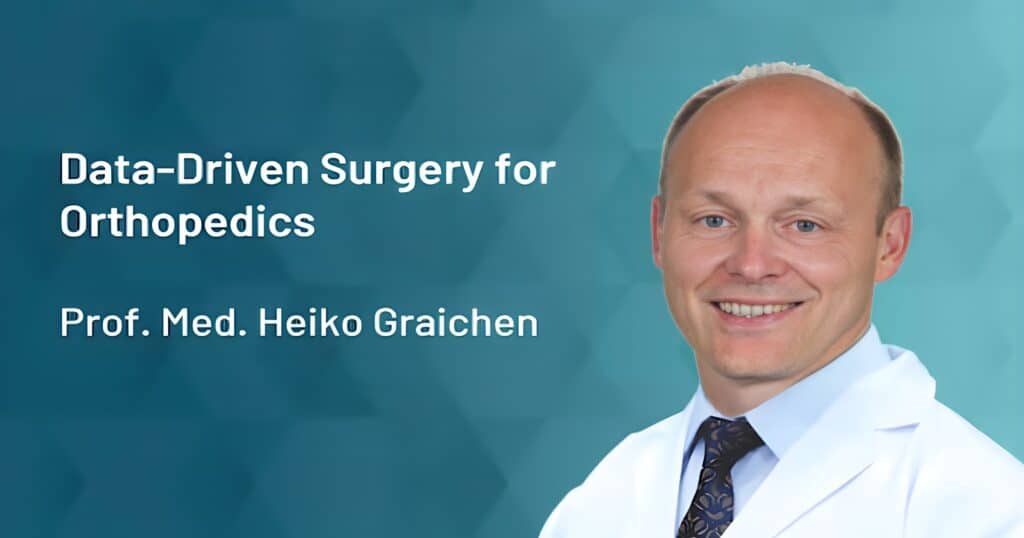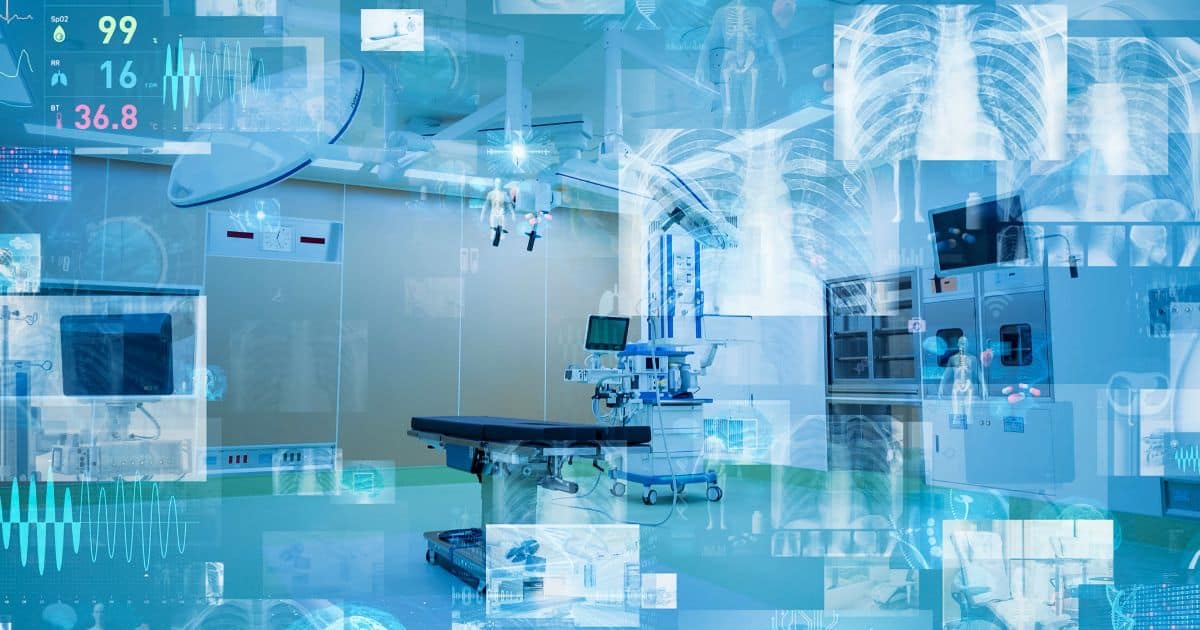
Blog
Data-Driven Surgery for Orthopedics by Prof Med Heiko Graichen
Read More

Caresyntax Blog
May 22, 2023
Surgical data, especially video data, is critical for learning and improving both individual surgeon performance and the quality and efficiency of the entire perioperative care continuum. But common misconceptions that the law prohibits–or that there is some legal risk associated with–recording surgeries, are preventing improvements that could be realized by leveraging this valuable source of information.
I started my surgical career in 1989 as a first-year resident in a small community hospital called Georgia Baptist Medical Center in Atlanta, GA. Coincidentally, the largest surgical meeting in the United States (US), the American College of Surgeons Clinical Congress, was in Atlanta in October 1989. At one of the booths in the exhibit hall, a video demonstrated a laparoscopic cholecystectomy by Eddie Joe Reddick, a private practice general surgeon from Nashville, TN. It was the first public display of a laparoscopic general surgery procedure, a gallbladder removal, in the US and launched the minimally invasive surgery evolution.
A recent series of articles published in General Surgery News details the history of this laparoscopic evolution. It was written by Dr. Doug Olsen, Dr. Reddick’s partner, who worked closely with him to integrate laparoscopic procedures into their clinical practice. Through a variety of coincidences, our hospital performed more laparoscopic procedures than any other hospital in the world in 1990, according to sales figures. One unique factor that allowed us to adopt laparoscopy so quickly was that all our attending surgeons, even those in competing practices, agreed to work together to embrace this new minimally invasive surgical approach to benefit patients.
“Transparency allows others to contribute assistance during procedures and to learn from errors and complications, as well as optimal technique during and after procedures, by reviewing the surgical videos. But when the videos are not recorded and utilized for sharing and learning, all that video data — and the associated opportunities — are lost.”
I was fortunate during my residency that we had a just culture, where surgeons and residents often stood in the OR unscrubbed just to watch the video monitor so that additional eyes were on the surgery, especially on difficult cases. The focus was always on ensuring the best technique, avoiding complications, and providing patients with a safe and successful outcome. There was a level of humility that allowed anyone in the OR to speak up and make a suggestion or ask a question, especially when a potential error might occur. This included the nurse, scrub tech, medical student, or even an industry sales rep if they were in the room. Everyone was there contributing their perspective in the best interest of the patient. Because of this environment of humility and transparency, we adopted the first common procedure, laparoscopic cholecystectomy, without a common bile duct injury through our initial 2,000 cases.
Because I did my residency in this type of environment, I was very comfortable doing laparoscopic procedures with anyone watching. I performed dozens of laparoscopic procedures worldwide in front of dozens or even hundreds of surgeons and other healthcare professionals. These live cases were just a regular part of my 30-year surgical career. I knew I was not perfect, and some complications did occur. I once had some bleeding when the electricity went out briefly while operating in the Dominican Republic. When the electricity went back on, I was able to stop the bleeding without harming the patient. I was so comfortable with the transparency of my surgical video that I was chosen to perform a laparoscopic procedure in Tbilisi, Republic of Georgia, while the President at that time, Eduard Shevardnadze, was in the audience.
I also performed a laparoscopic hernia repair on Dr. Randy Martin, a well-known cardiologist who was the medical news reporter for a local television station in Atlanta. Before the operation, he asked if his producer could interview me while I did his hernia repair. He showed the interview on the six o’clock news a few days later. I even allowed a lawyer to videotape a complex procedure I was doing because the patient was involved in a lawsuit. I had to chuckle a little when the lawyer became light-headed and had to sit down during the procedure.
I’ve always believed in the transparency of healthcare data, including video data, because it is critical for learning and improving as an individual surgeon and the healthcare system. But unfortunately, this is still not common in healthcare. Many clinicians want to share their data and record and share videos, but they are commonly told they are not allowed to do that. It’s not because any law prohibits it; instead, they are told they can’t record videos because hospital lawyers prohibit it out of fear that the videos will be used against them, in a surgical complication lawsuit, for example. Because of this self-imposed limitation in the U.S., we have lost the opportunity to obtain data from millions of surgical procedures and all associated learning and patient benefit. This lack of transparency and availability of video data has contributed to the profound lack of progress in improving patient safety and the value of care for our healthcare system.
“Due to the common misconception that the law prohibits (or that there is some legal risk associated with) recording surgeries, the US Government passed the Patient Safety and Quality Improvement Act of 2005 to improve the use of data for patient safety and improvement.”
Due to the common misconception that the law prohibits–or that there is some legal risk associated with–recording surgeries, the US Government passed the Patient Safety and Quality Improvement Act of 2005 to improve the use of data for patient safety and improvement. The law facilitates a new type of organization called a Patient Safety Organization (PSO). PSOs work with clinicians to apply their skills and expertise in using healthcare data for patient safety and quality improvement.
“Because recording surgical video is a part of normal healthcare operations whose purpose is quality improvement, it is exempt from HIPAA, and does not need to be submitted to an Institutional Review Board (IRB).”
Because recording surgical video is a part of normal healthcare operations whose purpose is quality improvement, it is exempt from HIPAA, and does not need to be submitted to an Institutional Review Board (IRB). The data collected within a PSO is deemed a “patient safety work product,” it is federally protected from discovery in legal proceedings except potentially in a criminal investigation. Any video recording can be included as a patient safety work product under a PSO.
“This self-imposed limitation on recording surgical video means we’ve lost the opportunity to obtain data from millions of surgical procedures, the associated learning, and patient benefits.”
In 2022, many organizations are still not providing enough opportunities for capturing and learning from video data from most surgical procedures. Caresyntax is a specialized PSO in surgery, dedicated to bringing data-driven surgery to healthcare. They work with providers and their organizations to collect, aggregate, and analyze patient data to identify improvement opportunities— whether cultural, process/operational, or clinical — so that improvements can be designed and executed to detect, prevent, and/or correct events proactively.
With their expertise in data science applied to healthcare and the protections enabled by their PSO designation, there are new opportunities for hospitals and clinicians to work together to make healthcare data transparent and valuable and to use surgical video data to make patient care safer. The protections of a PSO allow us to work together in a just culture and to use data to improve outcomes rather than being driven by the irrational fear of data being used against us.
To learn more about the benefits of working with a data platform that is a listed PSO specializing in surgery, visit the Caresyntax Patient Safety Organization (PSO) webpage.
Banner photo credit: Sony Electronics Inc.